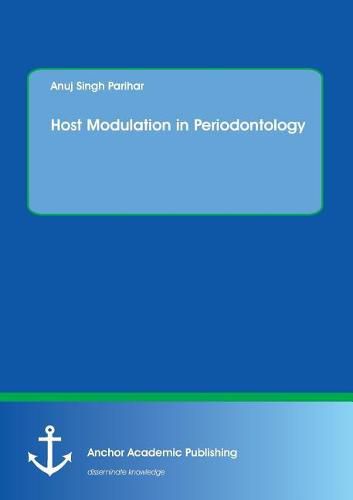Readings Newsletter
Become a Readings Member to make your shopping experience even easier.
Sign in or sign up for free!
You’re not far away from qualifying for FREE standard shipping within Australia
You’ve qualified for FREE standard shipping within Australia
The cart is loading…






This title is printed to order. This book may have been self-published. If so, we cannot guarantee the quality of the content. In the main most books will have gone through the editing process however some may not. We therefore suggest that you be aware of this before ordering this book. If in doubt check either the author or publisher’s details as we are unable to accept any returns unless they are faulty. Please contact us if you have any questions.
A long time, periodontitis was believed to be an inevitable consequence of aging and uniformly distributed in population. This age old belief was again supported by another belief that disease severity was directly proportional to plaque levels. But in the mid 1990’s early insight about complex diseases like periodontitis, led to new conceptual models of pathogenesis. In recent years, the role of microorganisms as the principle etiologic factor in periodontal diseases has gained new perspectives. Periodontal disease is a multifactorial and complex disease which is characterized by an upregulated or maladapted immune inflammatory response to bacterial plaque which predisposes to periodontal breakdown. Although periodontal disease is initiated by bacteria colonizing the tooth surface and gingival sulcus, the host response is believed to play an important role in the breakdown of connective tissue and bone. Thus, it can be summarized that periodontopathogens are necessary to cause periodontal disease but they are not sufficient to cause the disease. In response to infectious or inflammatory disease, two distinct yet intricately linked immune responses occur - innate & adaptive. The immune system is essential and the body has to marshal the innate and adaptive responses in order to stave off infection. However, in inflammatory disease the response becomes chronic and tissues do not return to homeostasis. The development of an immune inflammatory response during periodontitis in susceptible individuals results in the local production of a variety of inflammatory mediators. The development of an immune inflammatory response during periodontitis in susceptible individuals results in the local production of a variety of inflammatory mediators. Pro-inflammatory cytokines molecules and the cytokine network play an essential role in the pathogenesis of periodontal diseases. Therefore, the aim of this review is to provide comprehensive information and an update on various thera
$9.00 standard shipping within Australia
FREE standard shipping within Australia for orders over $100.00
Express & International shipping calculated at checkout
This title is printed to order. This book may have been self-published. If so, we cannot guarantee the quality of the content. In the main most books will have gone through the editing process however some may not. We therefore suggest that you be aware of this before ordering this book. If in doubt check either the author or publisher’s details as we are unable to accept any returns unless they are faulty. Please contact us if you have any questions.
A long time, periodontitis was believed to be an inevitable consequence of aging and uniformly distributed in population. This age old belief was again supported by another belief that disease severity was directly proportional to plaque levels. But in the mid 1990’s early insight about complex diseases like periodontitis, led to new conceptual models of pathogenesis. In recent years, the role of microorganisms as the principle etiologic factor in periodontal diseases has gained new perspectives. Periodontal disease is a multifactorial and complex disease which is characterized by an upregulated or maladapted immune inflammatory response to bacterial plaque which predisposes to periodontal breakdown. Although periodontal disease is initiated by bacteria colonizing the tooth surface and gingival sulcus, the host response is believed to play an important role in the breakdown of connective tissue and bone. Thus, it can be summarized that periodontopathogens are necessary to cause periodontal disease but they are not sufficient to cause the disease. In response to infectious or inflammatory disease, two distinct yet intricately linked immune responses occur - innate & adaptive. The immune system is essential and the body has to marshal the innate and adaptive responses in order to stave off infection. However, in inflammatory disease the response becomes chronic and tissues do not return to homeostasis. The development of an immune inflammatory response during periodontitis in susceptible individuals results in the local production of a variety of inflammatory mediators. The development of an immune inflammatory response during periodontitis in susceptible individuals results in the local production of a variety of inflammatory mediators. Pro-inflammatory cytokines molecules and the cytokine network play an essential role in the pathogenesis of periodontal diseases. Therefore, the aim of this review is to provide comprehensive information and an update on various thera